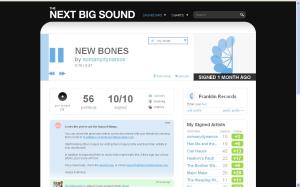Working during times like these is really interesting. Some feel that its time to cut prices and up the ante on promotions to sell, sell, sell. AdAge has an interesting 3 minute vignette featuring Nick Brien from Interpublic who from this clip appears to belong to this school of thought.
Most interesting for us is that we have had a number of briefs through from clients and prospects who are seeking to make more of an emotional connection with the consumer during these hard times. For consumer tech companies this is particularly important as once you go down the route of slashing prices its very difficult to turn back.
Consumers today are much more informed, the Internet is a bountiful source of information about different companies, not just product information but how a company treats it staff, the working conditions of their factories abroad, environmental impact etc.. etc… Branding has always been about these issues but before the Internet became so ubiquitous it was perhaps easier to concentrate on the logo, ad campaign, point of sale and sponsorships than the doing, the all encompassing permeation of values in everything a company does, of branding. Our own Trust Barometer shows that the most powerful drivers of trust are quality of products or services, customer service and the company’s overall reputation.
I’ve seen some great examples of the doing variety of branding which I am mentally banking but here are some examples I’d like to share. Not all are from the world of consumer tech but all provide some great learnings:
– Apple introduced Genius Bars to their stores manned by ‘Geniuses’ to help their customers with any problems. Great bit of customer service and one that doesn’t involve you clicking through several options on your telephone. When the iPhone launched the company also gave every member of its full-time staff in the US one instantly creating iPhone and Apple evangelists.
– Npower Hometeam engineers give their customers the ‘red carpet treatment’. They use rolls of red carpet to protect the floors of customer houses from their grubby boots and make sure they leave the house spotless on their departure. Nice!
– Nicholas Ind, the author of Living the Brand , believes that Patagonia is one of the best examples of a brand that does just that. This is a company that lets their staff down tools and go surfing when the waves reach 6ft. They even teach them how to abseil down a building to unfurl environmental protest banners. The company not only has an employee centric approach but believes that the business can be used to further environmental causes. Nicholas’ book is definitely worth a read.
– Lexus is a brand I really admire. The research and development that went into the creation of the car by sending engineers to live in Laguna Beach for a year to study the lifestyles of the rich and famous was worth it. It is the most trusted luxury car brand in the US. The brand also offers exceptional customer service. They have a version of Apple’s Genius bars in their showrooms but they also sent over 500 dealers and general managers to work at Ritz Carlton hotels for 3 days. As a result gentle touches such as fresh flowers in the showroom, marble floors in the bathrooms and chocolates and bottled water in the cupholders when customers come to pick their car up after a service. When their 400 Sedan hit the market for them only to discover there were some minor glitches, 300 Lexus representatives travelled the US to apologies to the car owners in person. Brilliant.
The final example is given by Jeremy Bullmore in one of the essays he wrote to accompany a WPP annual report. Incidentally these are conveniently available in a book entitled Apples, Insights and Mad Inventors (a nice little stocking filler). He gives the example of a supermarket chain who before stacking up the lettuce on the shelves would remove the outer leaves so the salad wa at its freshest. The leaves went straight into the bin until one employee suggested that they were bagged and given away free to shoppers whose kids had rabbits. They were called ‘bunny bags’. This is possibly my favourite example of the doing type of branding that will have undoubtedly elicited a powerful emotional connection between customer and supermarket.
